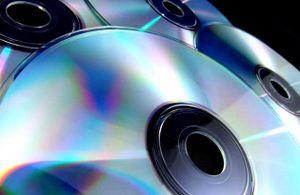The cost of buying music either for personal or professional classroom use can really add up over time. Spending ninety-nine cents here and fourteen dollars there can force us to budget money away from other, more substantial classroom purchases. There is good news though, because we now live in a world where you may never need to spend another dime buying physical or digital music. The growing prominence of streaming audio services that are popping up all over the web means that you may never again need to purchase or burn a CD. Want to save more money to put back into your music education budget? Read on to find out how.
Anyone who wants to have their students do listening assignments as a part of a class or ensemble rehearsal usually has to provide the music in physical form such as on a CD or loaded on a portable MP3 player. Both of these solutions can be expensive and easy to misplace as well as unreliable due to scratches or unintentional damage. Online sites such as Spotify, Google Play, and Amazon provide a simple, digital option, and are making it incredibly easy for you to find,use, and share almost any piece of music you would ever need to use in your classroom.
How To Use Music Streaming Sites As An Educational Tool
The main attraction to these streaming audio services is that at this point many of them can be used for free. Their library of tracks and features vary greatly from site to site, but between all of them you can almost certainly find any piece of music you might ever need. A bonus is that in many cases you will also find multiple versions of the same song performed by different artists or ensembles, allowing you to use this material for comparison or critical listening activities.
Of the free services two names tend to dominate, Spotify and Grooveshark. Both services offer hundreds of thousands of musical tracks for free, streamed live over the Internet to your computer. Although compressed into MP3 format the music stream is decent quality but be aware that you will still occasionally be able to hear audio artifacts in the sound. Upgrading either of these services through a monthly subscription enables access to higher bitrate files that are near CD quality. Subscribers also are able to play the music through smartphone, tablet, and other mobile devices.
The Negative Side of Music Streaming Sites
There are three downsides to using these online services, the first being that you don't actually own the music. If the service drops the track you need from their library you are out of luck. Second, you have to have a solid, consistent connection to the Internet which in some school systems may not always be available when you need it. Lastly, these services insert advertisements in between songs from time to time unless you pay for a monthly subscription. A good tip for teachers is to always stop the playback manually at the end of each song or turn down the volume just in case a loud, possibly inappropriate advertisement pops on at the conclusion of a track. Along the same lines, don't put the computer screen up on a video projector just in case a questionable advertisement pops up.
Storing and Streaming Music You Already Own Over The Internet
Another convenient alternative is to stream music that you already own. Major digital music retailers such as Google and Amazon now offer cloud based storage of your music tracks on their servers. In this type of arrangement you upload your library in MP3 format to the Google Play or Amazon Cloud Player servers. Once online you can stream those tracks to any computer in the world for free. This simple fact makes it incredibly convenient for teachers who find themselves working at multiple buildings, or who must often use different computers. Think of it as creating your own private streaming server with the added benefit of backing up all of your music off-site.
Other perks of using these services include the fact that any of the music you upload to the service can easily be downloaded back to your computer in case your local copy gets deleted or damaged. Think of it as an off-site backup for your music collection. Another benefit is that in the case of Google Plus you can share your music with members of your circles, allowing them one free full length play of the song from their personal Google Plus account.
Both Amazon and Google offer a certain amount of storage space for free. Google Play by far offers the most, allowing you to upload up to 20,000 songs to their storage servers. Amazon Cloud Player only offers free space for 250 songs, but any tracks that you purchase through Amazon's MP3 library do not count against that 250 song limit. Additional space can be purchased on both sites for a small fee.
Which Music Streaming Service To Choose?
So which type of service is better for use in the music classroom? It depends on what your goals are. If your existing library is small and your goal is to provide a variety of different listening opportunities for your classes then Spotify or Grooveshark are definitely the place to start. If you have a much more limited scope of just wanting to play pieces from an existing library you have accumulated over the years then Google Play or Amazon are the way to go.
Finding the best online music streaming service for your music education classroom really boils down to personal preference. Take each of these services out for a test drive and see what works best for your particular situation.

